
A little African Kingdom with a lot to offer

As a South African, I’ll admit that I only thought of Swaziland as just an obscure little country almost entirely engulfed by my own, and I hadn’t considered it much of a travel destination. Perhaps because of its small size, Swaziland often tends to get overlooked when people are planning a trip through Africa. However, when Swaziland Tourism recently sent out an invite to join them on a media trip, I jumped at the opportunity to get off the beaten track and find out more about this unexplored treasure. I soon discovered that this Southern African country might be small but limitless.
As soon as we drove across the unassuming Ngwenya border from South Africa, I was struck by how the yellow of South Africa’s plains gave way to an eruption of pea-green hills and sandy red roads.

Swaziland’s diverse landscapes include magnificent mountains, gorges, rivers, waterfalls, lush valleys, typical African bush, and unique rock formations. Our five-day whirlwind trip saw us exploring both the glorious natural beauty of Swaziland as well as the heritage and culture of its proud population.
Action-packed adventure
Our journey started at Hawane Resort, which is not 30 minutes from the border. Nestled in Swaziland’s rolling hills, we got close to nature on horseback in this idyllic setting. Walking, trotting and sometimes unintentionally cantering through the grassy wilderness was a fantastic way to experience the country’s expansive beauty, and I immediately fell in love.
While our group leader, Star, sat nonchalantly astride his mare with his cowboy hat tipped partially over his eyes, the rest of us wiggled in our saddles through the first half of the ride. But as soon as we gained some confidence and crossed the road into the grasslands, we were blown away by the view before us. The crisp air and the scent of morning dew made for a heady combination, and my horse, Mystery, and I became fast friends as we strolled through our stunning surroundings together.
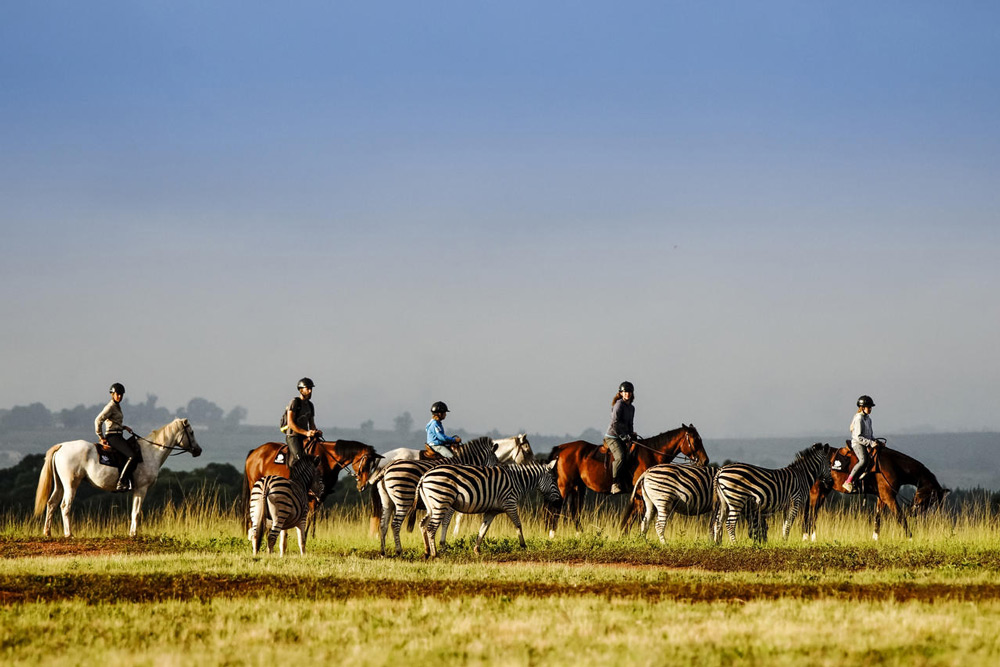
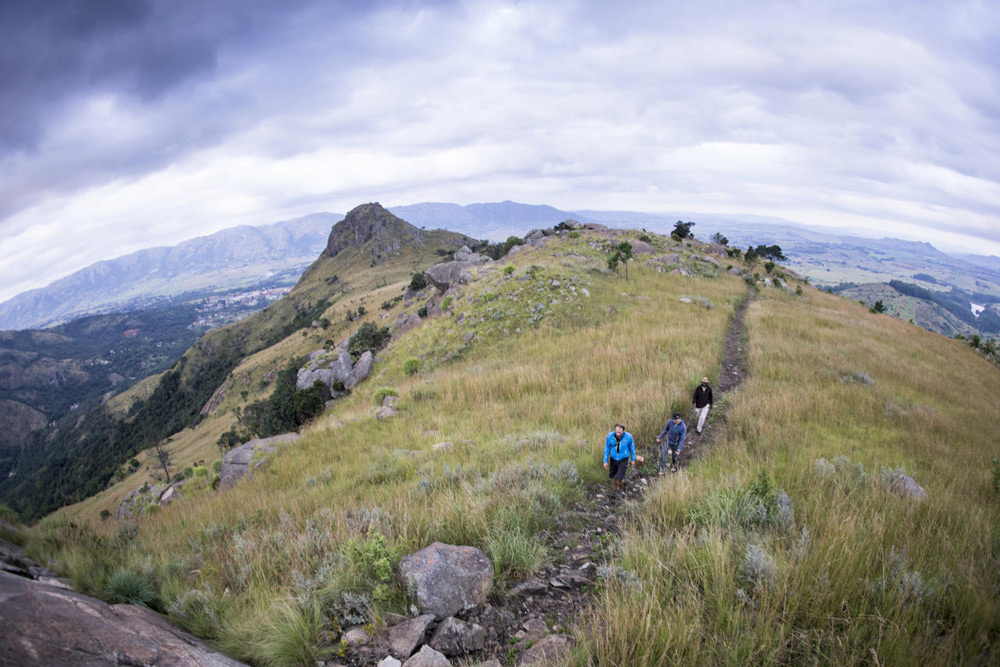
Once we had been filled with our fair share of wonder, we returned to the resort with aching legs. We headed off to the Malolotja Nature Reserve, where we substituted our saddles for harnesses in preparation for a different adventure. Malolotja covers some 18,000ha and offers diverse wetlands, woods and highveld landscapes. And here in this mountain wilderness, we set off on a bumpy game drive, during which our guide regaled us with safari stories and pointed out the different antelope and far-off baboon troops that inhabit the reserve. We also crossed paths with two women who were gathering grass to create brooms and other household items, and this encounter served to highlight the secure connection that the local rural communities have with nature.
Our driver soon dropped us off at the starting point of a hike to the treetop canopy tour. As we hiked down the valley, rolling grasslands gave way to a dense forest of vibrant greens and the occasional ‘whoop’ of a calling primate. This tour is arguably one of the most beautiful of its kind, and it is a fantastic way to view the park from up high, thanks to a wobbly bridge and ten zip lines that offered some unforgettable scenes as we whizzed through the trees.
Exhausted after a day filled with activities, we were ready to leave this leafy paradise and unwind at the stunning Maguga Lodge, which presented the opportunity to round off the day perfectly with a sunset cruise on the Maguga Dam.
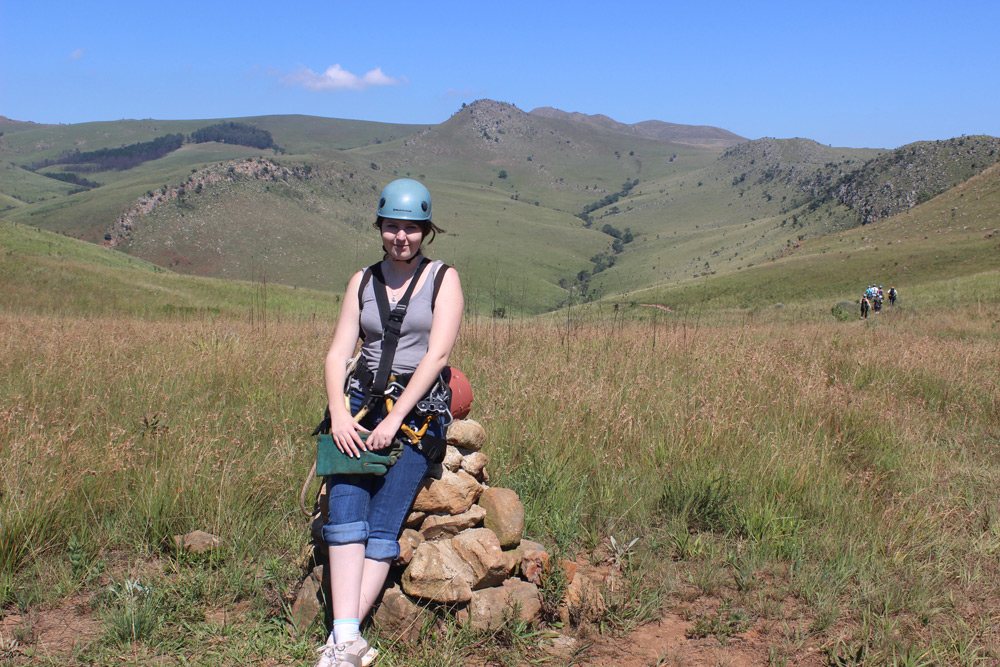
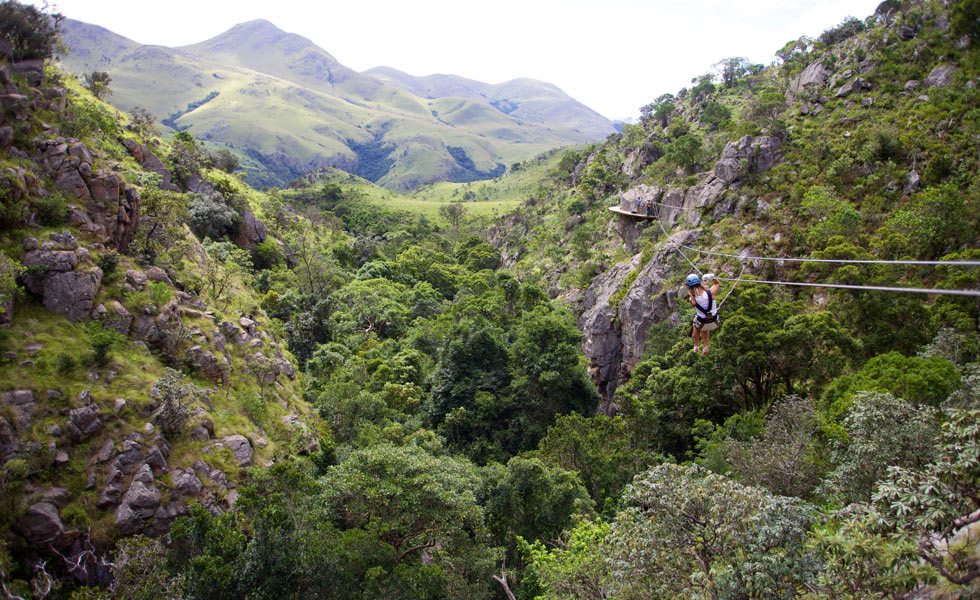
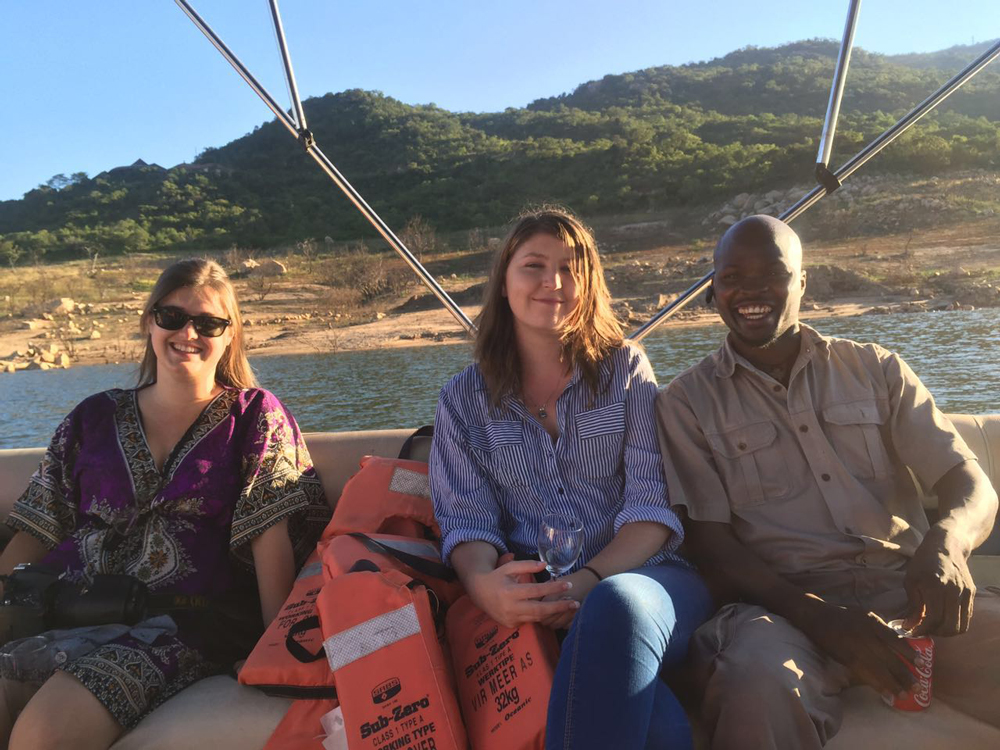
A Southern African sanctuary
The next part of our trip took us to the unforgettable Mlilwane Wildlife Sanctuary, where our accommodation came in the form of beehive huts – a magical experience for someone whose sleeping quarters have always involved four walls and a roof. However, traditional elements were combined with a welcome level of luxury that included running toilets and a comfortable bed, rather than a traditional sleeping mat.
Prying ourselves away from the novelty of our new bedrooms, we explored the camp and park. Mlilwane is a secluded sanctuary in Ezulwini Valley, also aptly known as the ‘Valley of the Heavens’. It is Swaziland’s pioneer conservation area, and the name ‘Mlilwane’, meaning ‘little fire’ in the local SiSwati language, holds particular significance as it is considered to be the metaphorical spark that started a significant conservation movement in Swaziland that resulted in over 22 species being saved from local extinction.
Adding to the charm of Mlilwane, many of the antelope found in the park wandered into camp each day, and I came face-to-face with a startled-looking impala several times while walking back to my hut. Another treat is the warthog family that has made their home under the restaurant’s deck and that spends its mornings warming up by the continually burning campfire, which is rumoured to have not been extinguished in three decades.

After arriving late the night before, our group was excited to partake in an early morning cycling safari to shake off the cobwebs. Mlilwane offers many different ways to experience the bush – from game drives to horseback safaris. Still, we had the chance to practice our pedalling on some somewhat professional-looking mountain bikes.
After a shaky first ride around the camp, we set off on the trail but soon stopped to gawk at a nearby crocodile sunning itself less than five metres away from the track. This was the first of many stops along the trail, and I soon got up to speed when I didn’t want to be left behind with the croc!
If you are moderately fit, which I’ll readily admit I’m not, a mountain bike is a great way to experience a safari. Much like on horseback, you can get closer to the wildlife than in a vehicle, as they aren’t scared off by the sound of an engine, and it offers the chance to easily stop to inspect termite hills and animal tracks that provide a richer experience of the bush.
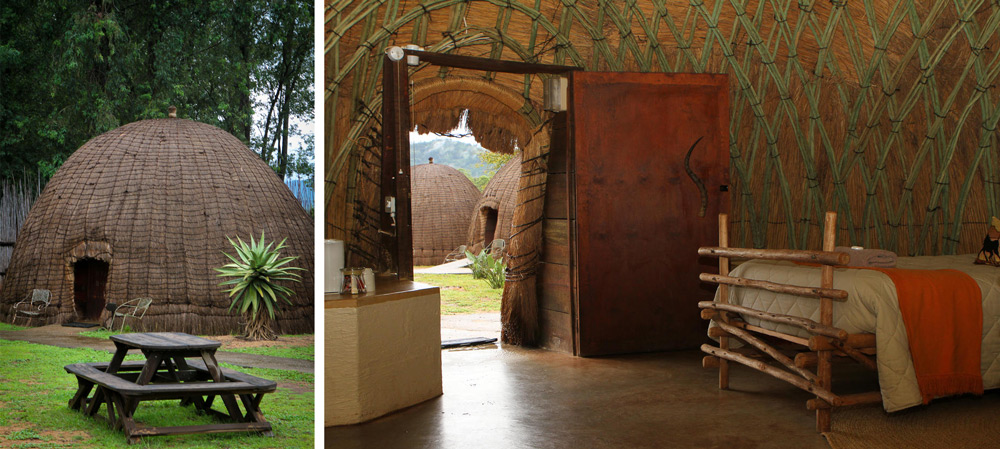

Culture
After spending the first half of our trip absorbing the natural beauty and wildlife that Swaziland has to offer, we spent the rest of our tour exploring the cultural heritage of which the country is so proud.
Swaziland upholds and embraces its ancient traditions. The different clans in Swaziland are all part of a single ethnic group that is united under the last true monarchy in the world, meaning that the current King and the Queen Mother have indisputable authority when it comes to governance. And while some people might be surprised to learn that King Mswati III has 15 wives – a number that increases yearly – the people seem to love the royal Dlamini family.
As each king tends to have many wives and many children, the heir to the throne is selected based on his mother’s status. The king, who is referred to as Ngwenyama (lion), has to be her only son and, once crowned, he is expected to choose wives from multiple clans to ensure national unity.
The Swazi nation hosts several ceremonies throughout the year to celebrate its heritage. Still, the most well-known is the Reed Dance – an eight-day ceremony during which young women honour the Queen Mother, who is known as Indlovukazi (she-elephant), by presenting her with freshly cut reeds at the royal homestead, before the dancing and singing begin.

While our visit didn’t coincide with the Reed Dance, we had the opportunity at the Mantenga Cultural Village to see some of the country’s traditional dances and many of their other costumes and customs. The performances were powerful, and you could feel the passion in the dancers’ movements, as grown men and young boys moved with the grace of ballerinas before stomping down with a thud.
While people are ferociously protective of their culture and way of life, they also love welcoming tourists. They can be master negotiators, which we discovered firsthand during our Mbabane Market trip. This market is a great place to pick up curios and handcrafted gifts, but it is best visited by those who are ready and willing to haggle. Excited calls in SiSwati welcomed us as we clambered out of our bus. A few hundred Rands later, we left with some stunning trinkets and a slightly dazed sensation at having encountered so many keen salespeople.
Finally, the last stop on our trip was in the country’s capital of Mbabane at the prestigious Mountain Inn, which has played host to many delegates over the years and overlooks the stunning valley below. Here, we ended our tour of Swaziland – with a glass of wine in hand, a content feeling of discovery, and a new appreciation of this marvellous part of the continent.


When and how to get there
While the country has excellent weather all year round, it’s widely agreed that the best time to visit Swaziland is during the annual Reed Dance ceremony, which is particularly remarkable to watch as about 40,000 young women take part in the colourful celebrations. This event takes place around the last week of August or the first week of September, but the exact dates are based on ancestral astrology, so they are confirmed each year closer to the time.
While Swaziland is a beautiful country in its own right, flying straight into the international airport is rarely recommended, as it is far from the country’s main attractions. As a result, a preferred option is to drive to Swaziland from South Africa or Malawi, and, as it’s just over four hours by car from Johannesburg, it’s an excellent excuse for a road trip!
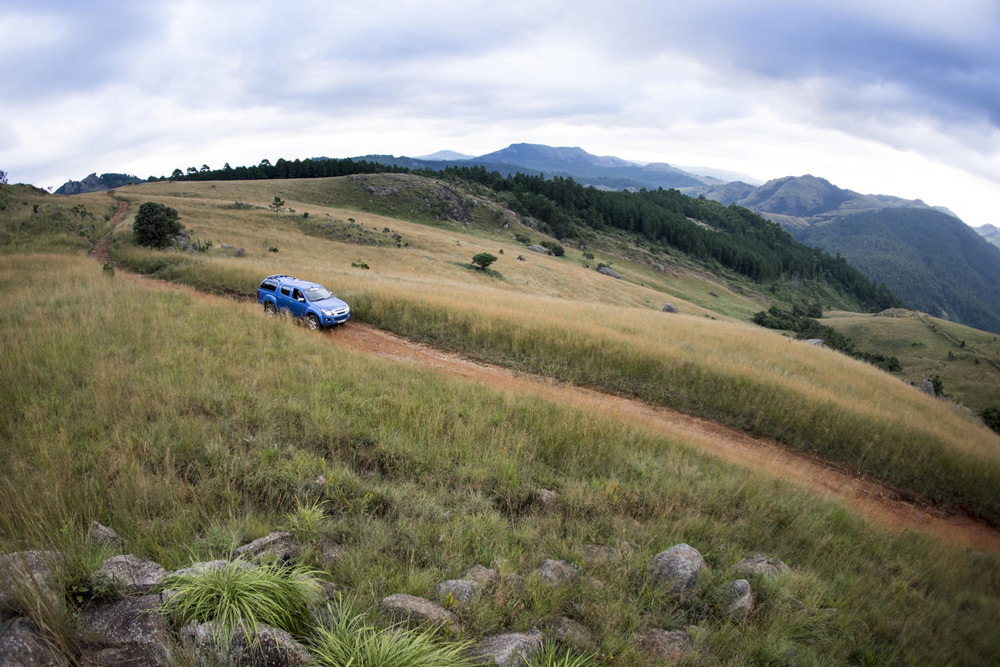
What to do
Swaziland offers many attractions to attract different travellers, and its tiny size lends itself easily to exploration. That said, you still need to know what you’re looking for to uncover all of its hidden treasures. A guided tour of the country is one of the best options to ensure you don’t miss out on anything, and hiring a Swazi driver allows you to learn firsthand about the rich heritage and wilderness. The Swaziland Tourism Association is situated on the Ngwenya border and can help guide your trip from there.
If you’re a bush enthusiast, a safari in one of the country’s game parks is a must, whether this is on horseback, bicycle or game drive. There is also the fantastic option of combining a trip to the reserves in Swaziland with a holiday at the Kruger National Park to make the best of two Southern African worlds.
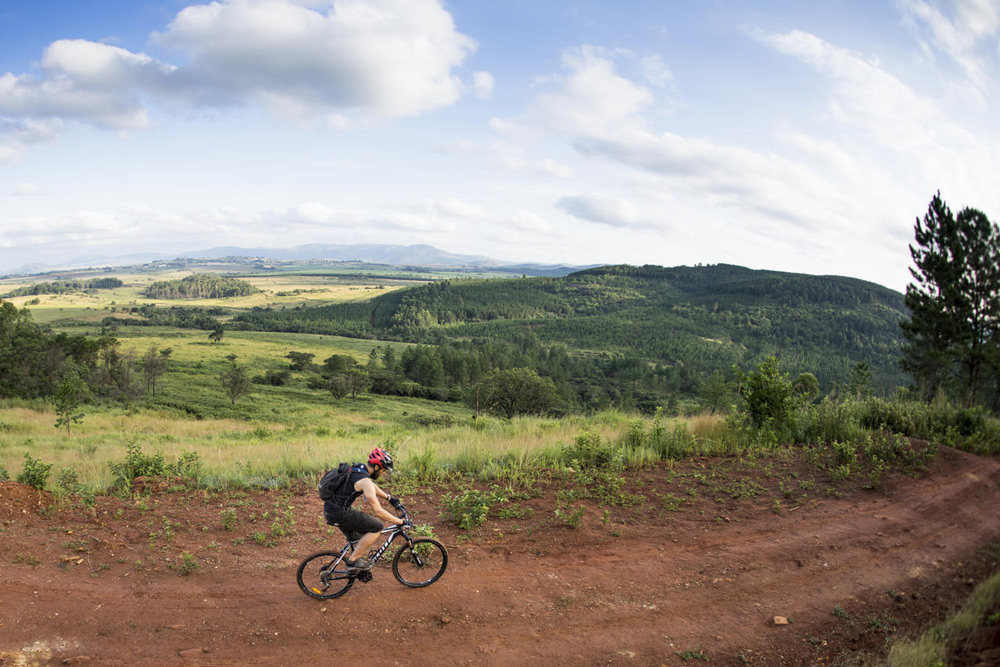
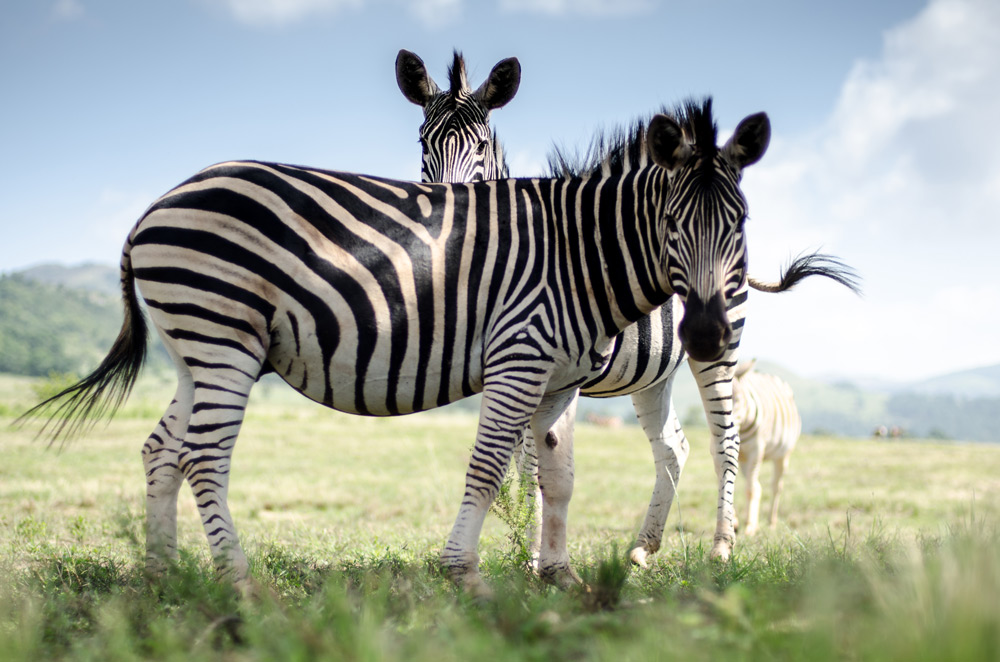
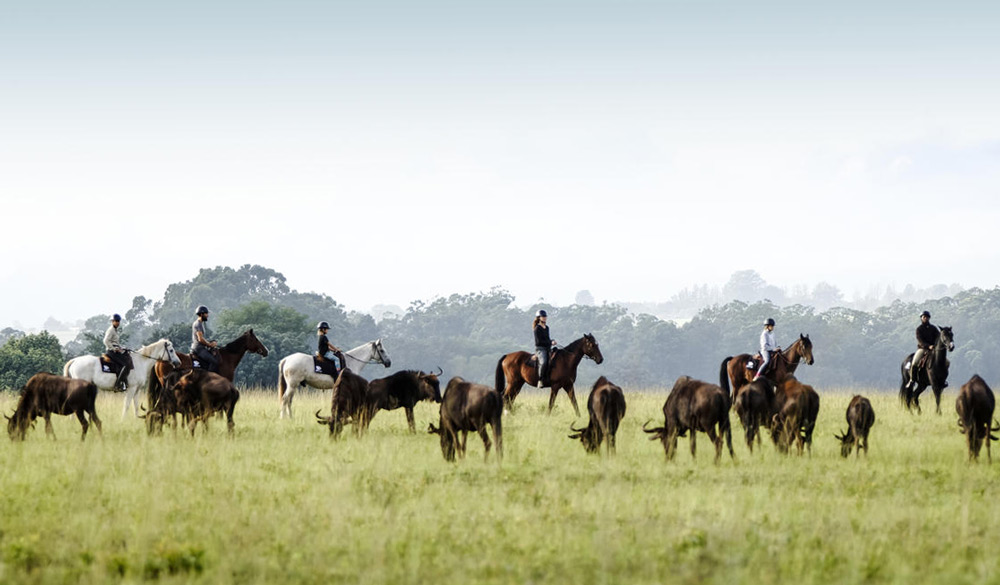
If birds get you reaching for the binoculars, Phophonyane Falls Nature Reserve near Pigg’s Peak not only offers beautiful riverine walks surrounded by mountains and waterfalls but over 250 species of our feathered friends, making it an ideal place for avian admirers, especially if the Narina trogon or crowned eagle is still on your bird list!
Those wishing to unleash their inner historian should visit Nsangwini Rock Art to see some of the world’s most diverse bushman paintings, which date back 4,000 years. It’s also worth stopping at Sibebe Rock, a famous execution rock used by ancient Swazi lawmakers, before hiking to explore the unique ‘Potholes’ rock formation at the Gap.
Shopaholics will also be in paradise as there are several shops to splash some cash, including Ngwenya Glass, where you can watch the glassblowers make beautiful curios from recycled glass. This is an entrancing sight to behold, and any purchase will support a great community project. A stop-off at the famous Swazi Candles to watch the candlemakers craft unique mementoes won’t go amiss, and a walk through Mbabane Market is the perfect place to brush up on your bargaining skills.

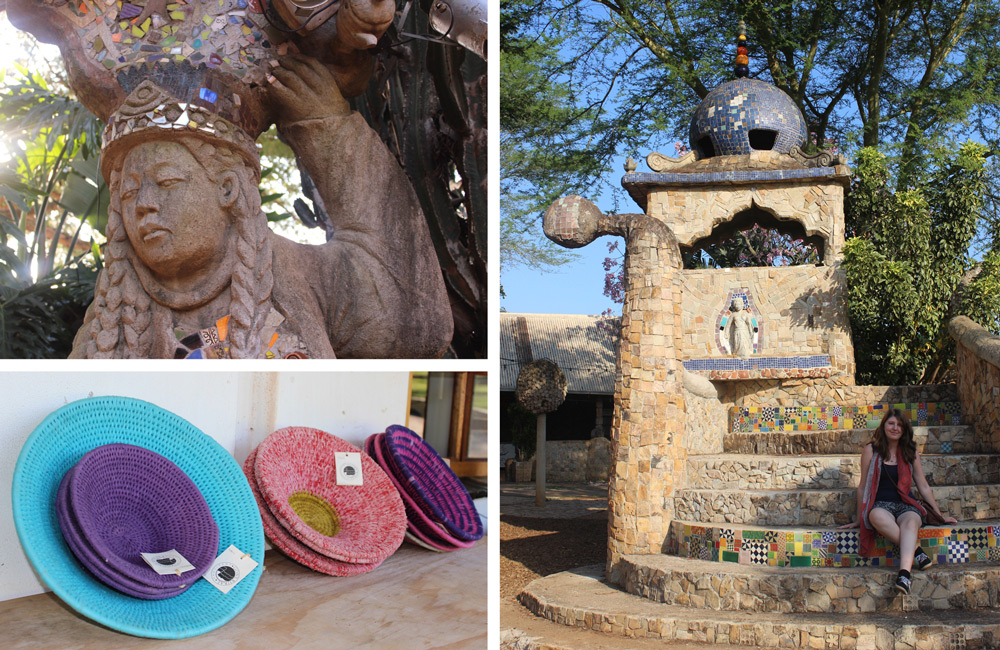
Where to stay
Swaziland’s accommodation options are varied. What’s more is that they’re incredibly affordable compared with other leading safari destinations in Africa, and most also offer discounted rates during winter, which is their dry season. As the country is so small, you can stay almost anywhere and still have access to different attractions. This said, there’s nothing quite like waking up in the wilderness to the sound of wild animal calls, so a stay in one of the country’s three big game parks is highly recommended.
Most parks offer a range of options, from rustic camping to luxury lodges. Depending on your preferences, you can find unique accommodation in beehive huts in Mlilwane Wildlife Sanctuary or choose to pitch your tent at Malolotja Nature Reserve, which is an unparalleled choice for campers. Visitors here can hike into the hills and camp in several designated spots, where they are likely to be the only people for miles.
 Find out about our ready-made safaris for your next African adventure – or ask us to build one just for you.
Find out about our ready-made safaris for your next African adventure – or ask us to build one just for you.


About the author
 Katherine Verhoeven is a Saffa through and through. Having studied Journalism and English at the University of Cape Town, she set her sights on the digital world and spent a year with the Africa Geographic editorial team as Community Manager, working hand-in-hand with lodge and tour partners to celebrate the continent.
Katherine Verhoeven is a Saffa through and through. Having studied Journalism and English at the University of Cape Town, she set her sights on the digital world and spent a year with the Africa Geographic editorial team as Community Manager, working hand-in-hand with lodge and tour partners to celebrate the continent.
Spending as much time travelling as she possibly can, Katherine has a ‘must-see’ list of countries that she is ready and raring to visit, but she enjoys bumbling around beautiful South Africa as much as she does exploring the rest of the world. Preferring to sit in front of a sunset rather than a television, she takes every opportunity to lock up her flat, pack up her bag, and hit the road to nowhere.
To comment on this story: Login (or sign up) to our app here - it's a troll-free safe place 🙂.![]()




